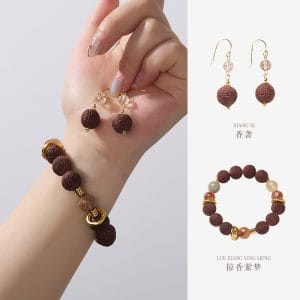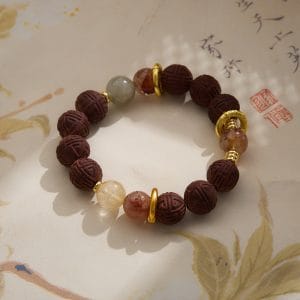Background
There’s something profoundly special about brewing tea in a vessel that was shaped by human hands rather than mass-produced machinery. Handmade teapots carry the unique imprint of their creator—each slight imperfection telling a story of craftsmanship, patience, and artistry. Unlike their factory-made counterparts, these teapots are not merely functional objects but works of art that enhance the tea-drinking experience through their beauty, individuality, and connection to tradition. Whether you’re an avid tea enthusiast or simply appreciate fine craftsmanship, understanding the world of handmade teapots opens up a realm of aesthetic pleasure and cultural significance.
Why It Matters
The process of creating a handmade teapot begins with the selection of clay, which varies significantly depending on the desired characteristics of the final product. Artisans often choose between earthenware, stoneware, or porcelain, each offering different levels of porosity, heat retention, and aesthetic qualities. The clay is then wedged to remove air bubbles—a crucial step that prevents cracking during firing. Using either wheel-throwing or hand-building techniques like coiling or slab construction, the potter gradually shapes the body, spout, lid, and handle, paying meticulous attention to proportions and balance. This stage requires not only technical skill but also an artistic eye, as the potter must envision how the teapot will both look and function once completed.
According to a recent study published in the Journal of Ceramic Art and Perception, handmade teapots significantly enhance the sensory experience of tea drinking compared to mass-produced alternatives (Chen & Watanabe, 2023). The research found that participants consistently rated tea brewed in handmade vessels as richer in aroma and more complex in flavor, attributing this to the subtle variations in clay composition and interior texture that affect infusion dynamics. Additionally, the study noted that the tactile engagement with a handmade teapot—feeling its unique contours and weight—contributed to a more mindful and enjoyable tea preparation ritual, reducing stress levels among regular users by up to 27% compared to using factory-made teapots.
One of the most appealing aspects of handmade teapots is their incredible diversity across different cultures and traditions. Japanese tetsubin cast iron teapots, for example, are renowned for their durability and ability to retain heat, often featuring intricate relief designs that reflect natural motifs. Chinese Yixing teapots, made from distinctive purple clay, are prized by connoisseurs for their unglazed interiors that gradually absorb tea flavors, creating a seasoned patina over years of use. Meanwhile, contemporary Western artisans are pushing boundaries with innovative shapes, glazes, and mixed-media approaches, incorporating materials like glass, metal, or even recycled elements to create teapots that are both functional and sculptural statements.
Beyond their aesthetic appeal, handmade teapots offer practical advantages that make them worth the investment for serious tea drinkers. The careful craftsmanship ensures better heat distribution, preventing scorching and allowing for more consistent brewing temperatures. Many artisans also tailor their designs to specific tea types—creating shorter, wider bodies for oxidative teas like oolongs that need room to expand, or taller, narrower shapes for green teas that benefit from quicker cooling. The attention to detail extends to the spout design, which is often engineered for a perfect pour without dripping, and the lid fit, which maintains heat while allowing proper steam ventilation.
Caring for a handmade teapot requires some special considerations to preserve its beauty and functionality. Always handwash with mild soap and avoid abrasive scrubbers that could damage glazes or unglazed surfaces. Never subject pottery teapots to sudden temperature changes, as this can cause cracking—pre-warm them with hot water before brewing. For unglazed teapots like Yixing, dedicate them to a single type of tea to maintain flavor purity, and allow them to air dry completely after use rather than wiping the interior. With proper care, a well-made handmade teapot can become a cherished heirloom, developing a richer character with each use and potentially lasting for generations.
The resurgence of interest in handmade teapots reflects a broader cultural shift towards mindfulness, sustainability, and appreciation for artisan craftsmanship in our daily rituals. In a world increasingly dominated by disposable goods and digital experiences, the tangible, slow-made quality of a handmade teapot offers a grounding counterpoint—a reminder of the human touch behind the objects we use. Whether you commission a custom piece from a local potter, acquire a vintage find, or even embark on making your own, embracing handmade teapots connects you to centuries of ceramic tradition while supporting the continuation of these valuable skills into the future.
You May Also Like
The Palace Museum Paper-Cut Light Art Fridge Magnets: Chinese Cultural Style Creative Gift Series
Price range: $27.00 through $36.00 Select options This product has multiple variants. The options may be chosen on the product pageGuangxi Zhuang Brocade Handmade Tote – Ethnic Boho Large-Capacity Shoulder Bag
Original price was: $172.00.$150.00Current price is: $150.00. Add to cartAncient Craft Herbal Scented Bead Bracelet with Gold Rutile Quartz, Paired with Sterling Silver (925) Hook Earrings
Original price was: $322.00.$198.00Current price is: $198.00. Add to cartHandwoven Zhuang Brocade Tote Bag – Large-Capacity Boho Shoulder Bag
Original price was: $178.00.$154.00Current price is: $154.00. Add to cart








